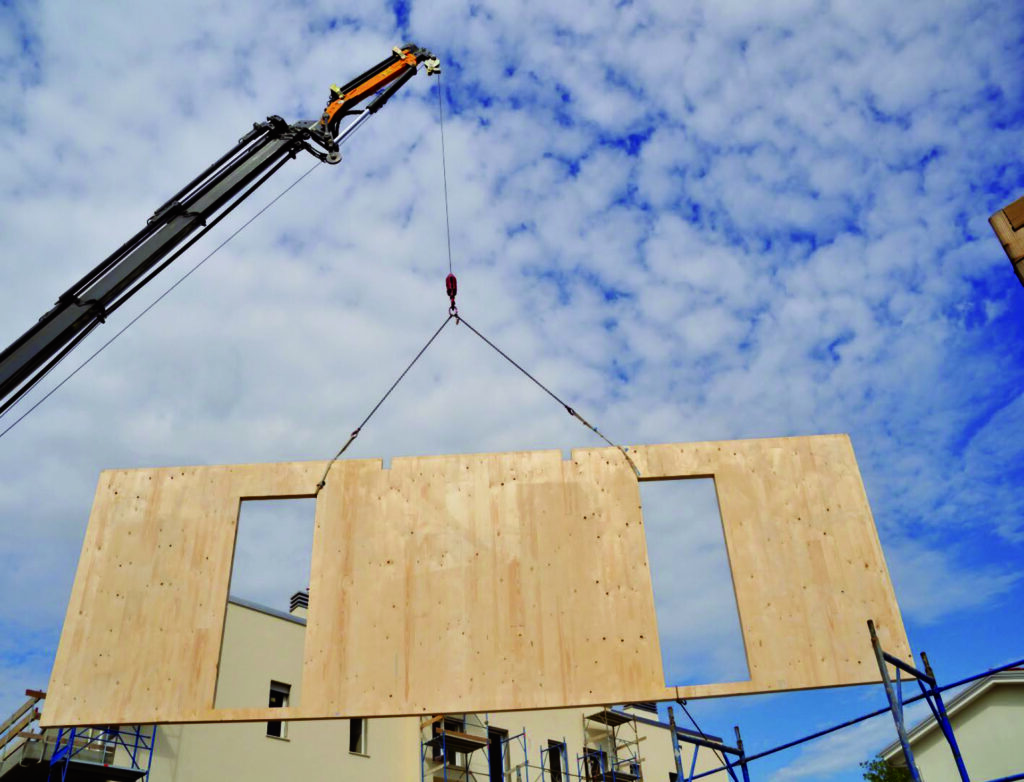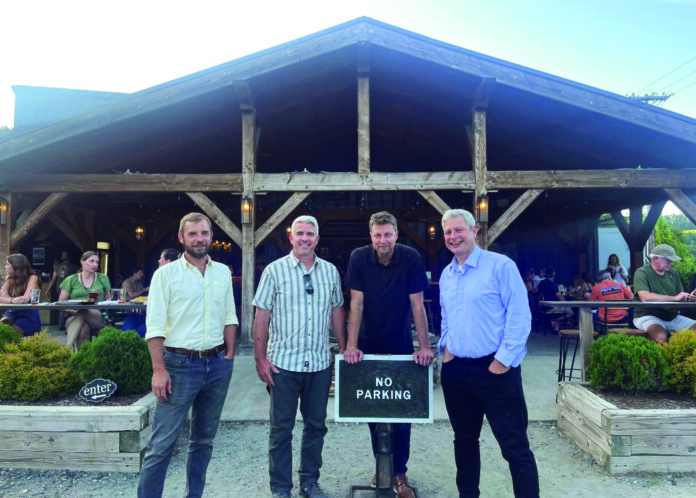Colby Swanson is helping launch a major effort to make that happen.
• The mission of the Industrialized Offsite Construction Engine (IOCE) includes job creation and innovative problem solving.
• It’s patterned after a German model in which collaboration among industry, academia and government drives innovation in a variety of industries.
• Although IOCE is seeking federal startup money, most of its ongoing funding will come from contracts with private sector companies, many of whom have expressed interest

Colby Swanson is a familiar name in the world of prefabricated construction. As Managing Partner of Momentum Innovation Group, his current role is industry strategist and consultant, but his background includes homebuilding, manufacturing, building failure forensic investigations and corporate strategy. He has launched, or helped to launch, multiple businesses, including one of the first Energy Star rating companies.
Swanson sees himself as a change agent and he has set the ambitious goal of dragging the homebuilding industry into the 21st century. He thinks big. And he doesn’t hesitate to invest his own time and money into something that offers potential.
His latest big project is an Industrialized Offsite Construction Engine (IOCE), which he has planned and is launching with Nolan Browne of ADL Ventures. (Browne will serve as CEO and Swanson as COO.) IOCE’s goals will include helping builders and manufacturers innovate, and creating new offsite manufacturing jobs in geographical regions where they’re most needed. The first region of focus will be the part of Appalachia that extends from Pennsylvania down to South Carolina.
To help with startup costs, IOCE is in the running for a $160 million grant from the National Science Foundation (NSF). But while the grant would be a welcome boost, the aim is to be funded primarily by private industry. Swanson and Browne are committed to making the operation successful either way. We spoke with Swanson about IOCE and about the impact he hopes it will make on the offsite construction industry.

OB: Can you briefly describe the project?
A: OIC will be a repository of industrialized offsite construction knowledge. It will use this knowledge to support the industry with applied research and workforce development activities. The industry badly needs these efforts, but it’s currently not organized or funded to carry them out. OB: Where did the idea come from?
A: OIC is modeled on the Fraunhofer Society in Germany, which has research institutes throughout that country, each focusing on a particular sector. Fraunhofer was created to help players in each sector work together and innovate. It’s way more effective than the current U.S. model of relying on industry associations.
OB: Who will be involved?
A: We will employ staff researchers and will also have partnerships with universities and other organizations. Our academic partners each offer a specific type of expertise. They include Carnegie Mellon (computer technology), Virginia Tech (construction management), Appalachian State (building science), and West Virginia University (automated manufacturing and robotics).

OB: Can you briefly describe the project?
A: OIC will be a repository of industrialized offsite construction knowledge. It will use this knowledge to support the industry with applied research and workforce development activities. The industry badly needs these efforts, but it’s currently not organized or funded to carry them out.
OB: Can you give examples of the types of projects you might tackle?
A: Let’s say a large real estate developer or large builder wants to deploy a lot of buildings. In order to do this, it needs to solve productivity and labor issues, and understands it has to move toward prefabricated construction. Prefab home parts being installed on-site. However, it doesn’t know how to determine which technology (panelized, modular, 3D printed, hybrid) would be the best fit for the company — based on the specific markets it targets and the type of buildings it produces. The IOCE can do this unbiased analysis and/ or strategy development to maximize success, impact and ROI. In another example, say an investor or developer has already decided that it wants to leverage modular technologies, but now needs to evaluate partnerships with legacy producers and/or the feasibility to purchase or stand up their own factory. We can help quantify and rank the value of all of these options using industry data as well as support implementation through the provision of unbiased factory design and equipment suggestions to optimize throughput. A third example might be an existing component manufacturer that is looking for ways to extend its capabilities with materials — lumber, concrete, steel, CLT, and 3D printing — in the most optimal manner. The IOCE is designed to be able to operate without bias such that any construction company can partner with us to accelerate its innovation journey. Our job will be to de-risk decisions to improve the company’s operations using industrialized offsite construction mentors.
OB: How will IOCE support itself? How much will it be structured like Fraunhofer?
A: Fraunhofer earns the bulk of its $3Bn+ R&D budget from competitively won applied research contracts for industry and government. The other 30% of a Fraunhofer budget comes directly from the German federal government. Similarly, IOCE will have a fee for- service model in which the majority of the funding (70%) will come from competitively won contracts with private sector companies. We foresee about 30% of the IOCE budget coming from the federal government, which will allow us to fund research, deployment and workforce development activities in the wider IOC ecosystem. Public dollars will allow us to fund necessary and important activities that individual companies may not want to fund. For instance, we might design an open-sourced, industrialized-grade school facility, or outpatient healthcare facility, that can be built in high volume and at lower cost. Or we may look into developing financing vehicles specifically for modular construction projects that more accurately allocate risk and offer better lending or insurance terms. There are endless opportunities for better collaboration and faster innovation and IOCE will be the place for that to happen.

affordable.
OB: Will the results of these projects be available to the industry as a whole?
A: Yes, and no. The results of each private project will generally be owned by the companies we contract with. However, the knowledge and expertise that IOCE gains while solving industry problems will be available to support subsequent research and activities for all stakeholders. This model is how Fraunhofer helped Germany lead the world in the automotive, chemical and industrial engineering sectors.
OB: Why are you focused on the Appalachia?
A: Appalachia has a number of great assets and is ripe for new industries. The region was the engine of the first industrial revolution, but has since lost its textile industry, its steel industry is a shell of its glory days and now its coal industry is dwindling. We intend to replace these dying industries with IOC. We will help retrain the hard-working Appalachia workforce, repurpose old steel mills into modern IOC factories and ship valuable IOC product around the US using Appalachia’s underutilized, yet extensive, railroad, river and highway intermodal system.
Q: How long will it be before you are working with clients?
A: We have already started working with many public and private sector stakeholders. If awarded, the NSF funding won’t begin until late 2023, but in the meantime, we have launched an Appalachia construction hard-tech accelerator called the Deployment Engine and we have a project forthcoming with the Appalachian Regional Commission to evaluate the workforce development needs for IOC in the region. By Q1 2024, we will be fully staffed and able to take on private sector clients. OB: What if you don’t get the grant? A: We have already raised $10 million from private industry partners in the region and are in ongoing conversatins for additional funding. The feedback we’re hearing is: “Someone has to take the lead and organize our fragmented industry towards more advanced construction, and we want to fund you guys.” Our partners also like that we will be a team of industry pros, rather than a bunch of MBA consultants who have never built anything.
OB: If someone wants to get involved with this project, what do they do?
A: We’re in the process of creating an IOCE website and will be launching in April, but in the meantime, they can contact Nolan or me.







